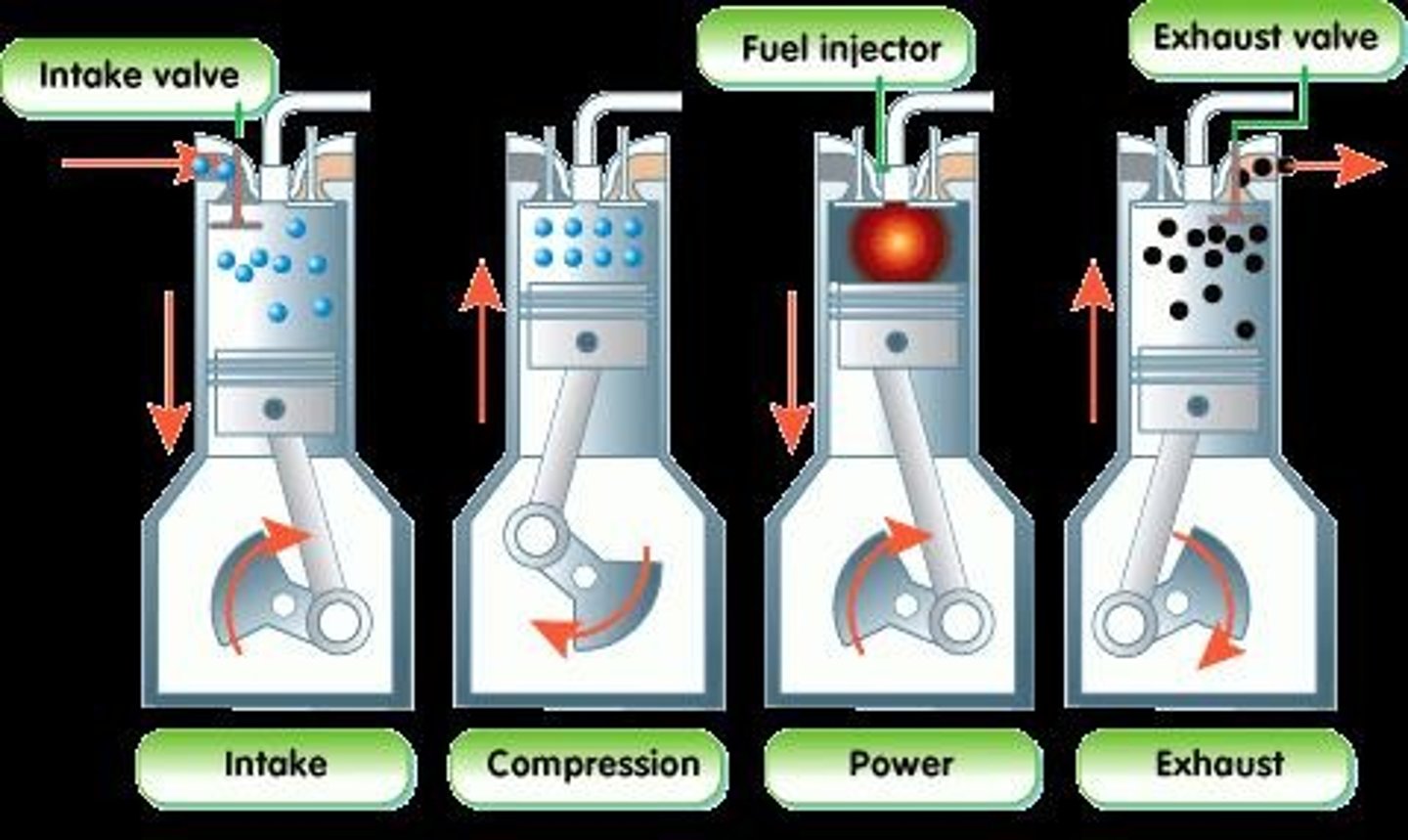Engineering Jc 24/25
1/33
There's no tags or description
Looks like no tags are added yet.
Name | Mastery | Learn | Test | Matching | Spaced |
|---|
No study sessions yet.
34 Terms
What are the four strokes in a petrol engine's four-stroke cycle?
1. Induction stroke, 2. Compression stroke, 3. Power stroke, 4. Exhaust stroke.

What occurs during the induction stroke of a petrol engine?
The piston moves down the cylinder with the inlet port open and the exhaust port closed, filling the cylinder with a mixture of petrol vapour and air.
What happens during the compression stroke of a petrol engine?
The piston moves up the cylinder with both ports closed, compressing the mixture at the top end of the cylinder.
Describe the power stroke in a petrol engine.
At the end of the compression stroke, an electric spark ignites the petrol vapour, causing a rapid burn that forces the piston down the cylinder.
What is the function of the exhaust stroke in a petrol engine?
The piston returns up the cylinder with the inlet port closed and the exhaust port open, expelling the gases from the cylinder.
What is the role of the spark plug in a petrol engine?
The spark plug creates an electric spark that ignites the petrol vapour in the combustion chamber.

What type of vehicles typically use a four-stroke petrol engine?
Cars.
What is a two-stroke engine commonly used for?
Small machines such as strimmers, lawnmowers, and scooters.
How does a two-stroke engine differ from a four-stroke engine?
A two-stroke engine combines the strokes into two phases, making it simpler
What type of engine is commonly used in trucks and buses?
Diesel engine.
What are the advantages of using diesel fuel in engines?
Diesel provides more pulling power or torque.
What is a key environmental difference between diesel and petrol engines?
Diesel engines produce more air particle pollutants but less CO2, as they burn less fuel.
What is the main disadvantage of a two-stroke engine compared to a four-stroke engine?
It is not as powerful as a four-stroke engine.
Strength
the ability to maintain shape under the application of force
brittleness
Breaks easily when impacted
hardness
difficult to scratch or indent
Elasticity
can be deformed a lot and still return to its original state
Ductility
will stretch a lot under a pulling force
malleability
will flatten easily under a squashing force
Toughness
both strong and not brittle, difficult to break, it absorbs energy of impacts by deforming but still wont break
Transparency
see through - opposite is opaque
weight
how heavy an object is
Battery
powers an electric current

Switch
Switches a circuit ON/OFF

LED (Light Emitting Diode)
Allows current in one direction only and gives off light

Resistor
Slows down the flow of current, protecting delicate components

Lamp
Gives off light

Capacitor
Stores electric charge

Light Dependant Resistor
Resistance drops with increasing light; used in street lights

Motor
Provides Power/Drive, used in models, printers, etc.

Voltmeter
Measures Voltage

Ammeter
Measures Current

Variable resistor
Used in speed/volume control. Also in dimmer switches
